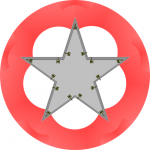
Category: 3D Objects & 2D Shapes and Measurements
Suitable for Grade Level: Elementary and Secondary
The Math in this Problem:
Siege Geometry is an investigation associated with angles, shapes, and area. Applying these notions to a case involving cannons and fortresses, students will be able to relate mathematics to a very practical and valuable application used in combat.
A siege is a blockade of a town, city or fortress to try to make it surrender. One of the greatest practitioners of the siege was Vauban who lived in France from 1633-1707. During his lifetime, He designed dozens of fortifications, invented new ways to attack them, and lead soldiers in numerous sieges.
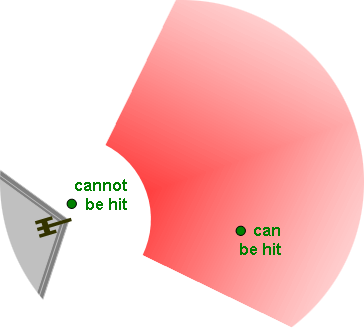
A single cannon (left) on top of a gray wall can hit attackers in an arc (red area), but cannot hit an attacker standing near the wall.
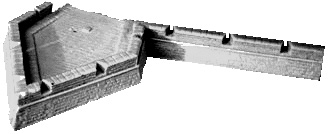
Cannon were placed into notches on the fortress walls.
When designing a fortress, Vauban ensured that an attacker standing anywhere outside the fortress could be hit with cannon fire. However, since each cannon was positioned high on top of a wall, it could not protect the area underneath. Also, each canon could not be rotated clockwise or counter clockwise more than 45 degrees from their straight-pointing-out-position.
This gray fortress is vulnerable because an attacker can stand near the walls and be totally safe. The red area is dangerous for the attacker, but the white area near the wall is safe.
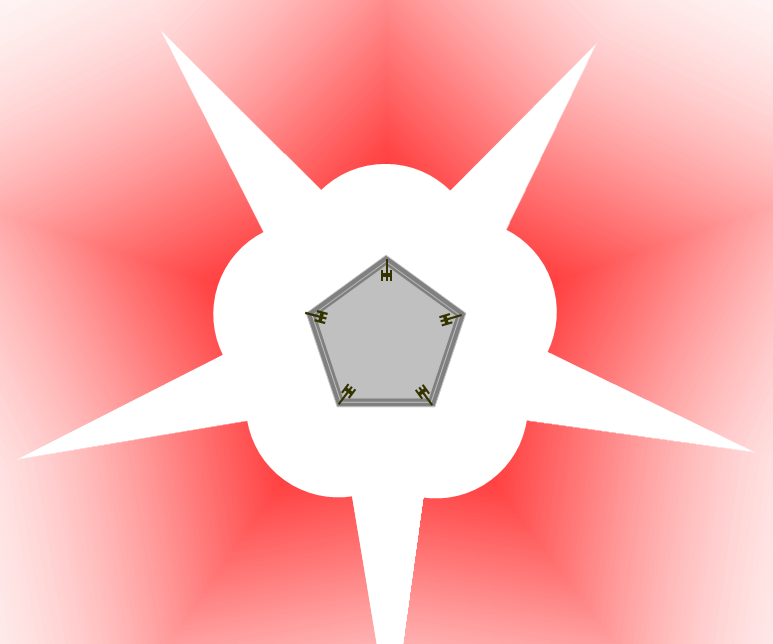
This gray fortress is less vulnerable because the attacker cannot stand safely near some parts of the wall.
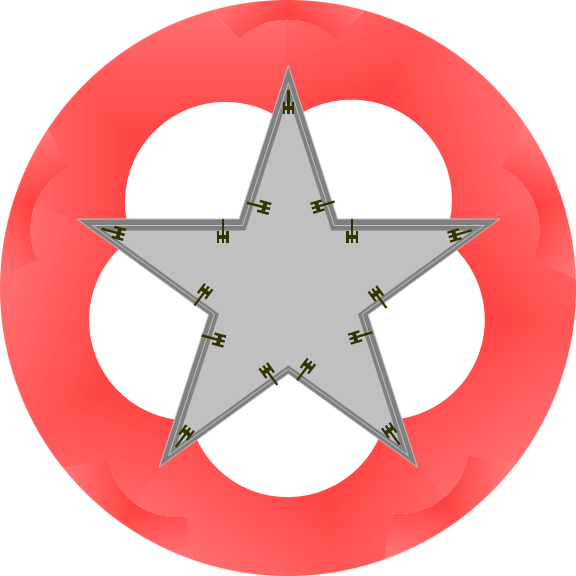
Can you create a fortress with less than 20 sides and less than 10 cannons that ensures that an attacker standing anywhere outside the fortress could be hit with cannon fire?
Hint – Jamestown was the first English settlement in North America. This is a sketch of what the fortress at Jamestown might have looked like in 1607.
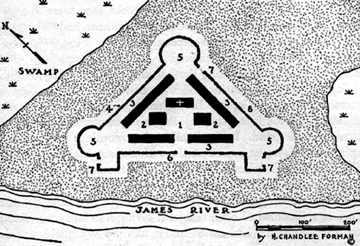
Extensions:
- This fortress design was not popular, can you think why? On the other hand, a fortress with 20 sides, called a bastion, became very popular hundreds of years before Vauban.
- Vauban also used fortifications called ravelins that were disconnected from the main fortifications. Add ravelins to your fortress. Ravelins were the first line of defense and often had weak walls on the inside so they could be destroyed if they fell into an attacker’s hands. The badly designed fortress below has ravelins that cover the walls of the fortress, but their walls are not protected.
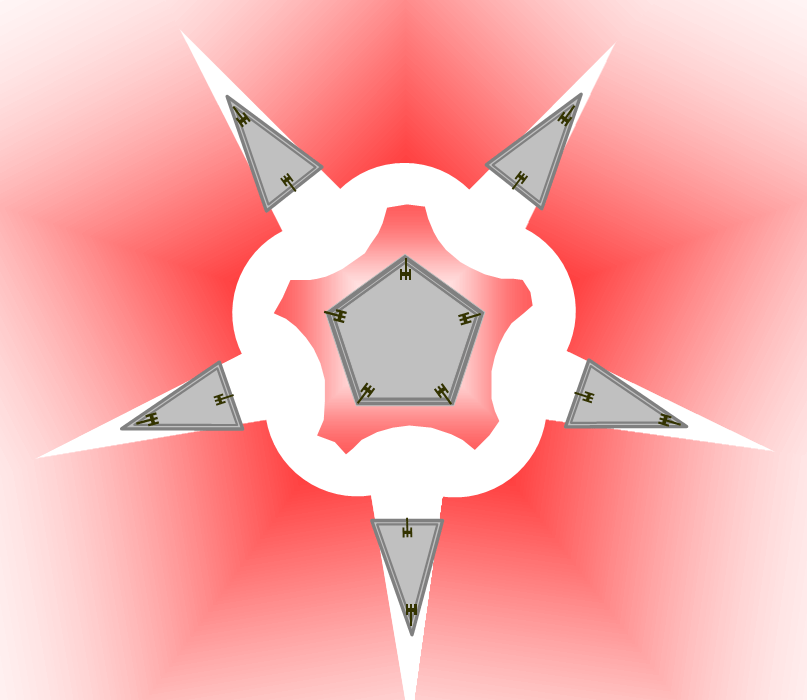
- Create your own measure of “impregnability”. What makes your design of a fortress the best? Is it the number of cannons? The shape of the fortress? A combination? Try designing the most impregnable fortress if you are constrained by cost (soldiers, cannons and walls all cost money).
- Cannon have a maximum and minimum distance over which they are effective. How does changing these numbers change fortress design?
- Cannons need space. How does this influence fortress design?
3D Extension:
- Design an international space station so that it has the same safety features as the earthbound fortresses above. How many flat walls do you need:
- If each wall is convex and cannot have holes.
- If the walls do not have to be convex and can have holes.
